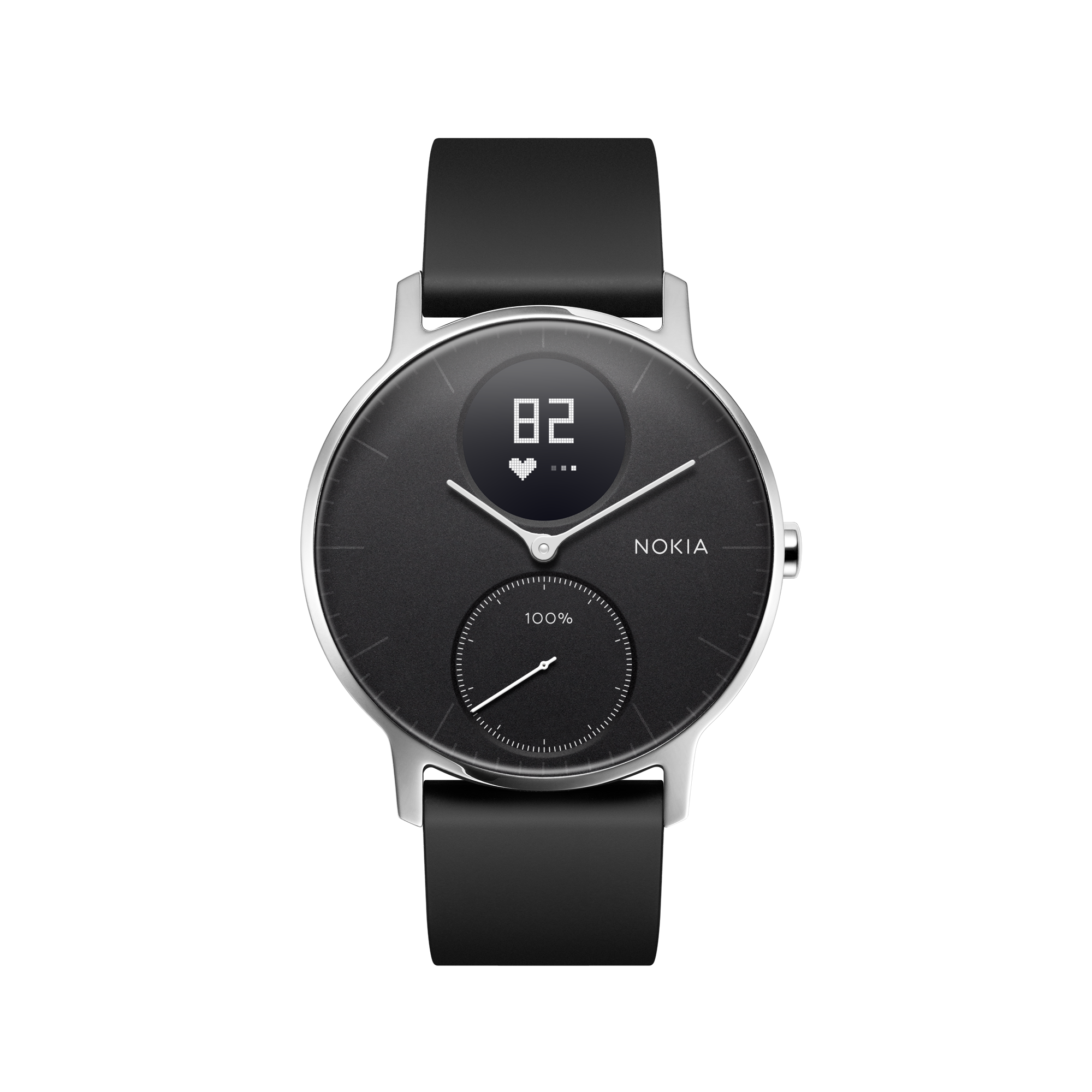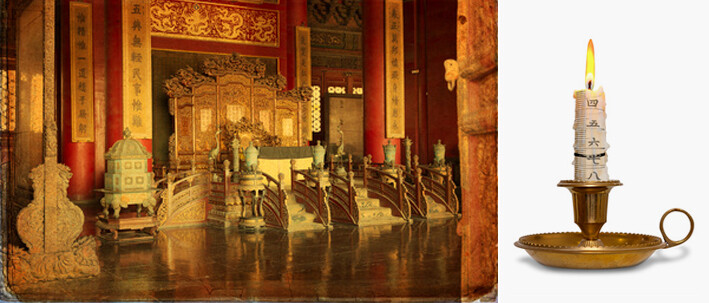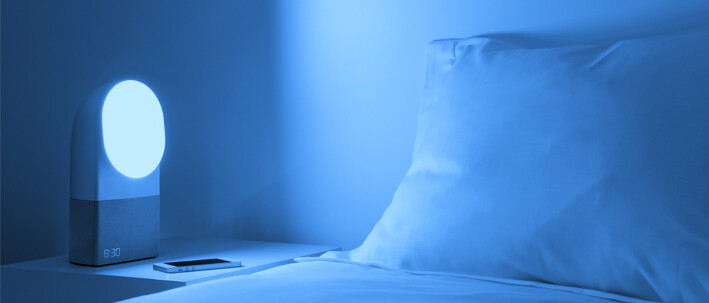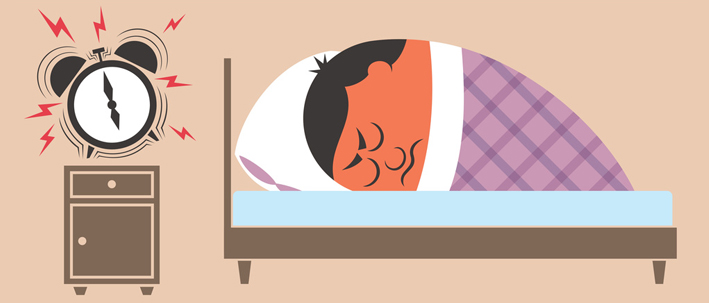
Breaking up is hard to do, and so is waking up. From cave to luxury condo, learn about mankind’s greatest advances in wakeup tech.
What is the best way to get woken up at a preset time? As we continue to make history with our sleep tracking devices, let’s go back into time and list the previous solutions.

The sun (since forever)
Even though early humans found shelter in dark caves at night (but not without first driving out its animal occupants), they lived by the sun — waking up as the sun rose and going to sleep at sunset. At dawn, the increasing level of light woke them up gradually. At dusk, the exposure to the dark favored the onset of sleep. With no artificial light and before the controlled use of fire, there wasn’t much to do at night anyway!
Main advantage
Apart from all constraints, this is the most natural way to wake up.
Main inconvenience
You cannot preset the wake-up time.

The bladder (since forever)
At one point, men must have figured out that they woke up earlier in the morning when they had been drinking more water than usual before going to bed (their full bladders prompting them to get up). But why would they want to do that? After all, there were no “punch-clock” jobs at the time.
Main advantage
Even though this is a rather primitive solution, it is clever. You become the alarm clock! Yay biohacking.
Main inconvenience
The lack of accuracy (you need to take all the fluids ingested during the day into account).

Roosters (since 9000 BC)
As humans gathered in tribes and villages, they were able to go to bed after sunset (thanks to campfires) and to wake up after sunrise (they no longer lived outdoors). For these sedentary men, roosters served as natural alarm clocks. Indeed, they like to sing in the early morning to mark their territory before they can be seen. And cock crows are particularly loud, reaching between 50 and 60 dB.
Main advantage
Incidentally, the rooster’s timing is perfect, as the farmer needs to milk his cows early on through the day.
Main inconvenience
Come off it! What a shrill sound! Plus, you can forget sleeping late on weekends.
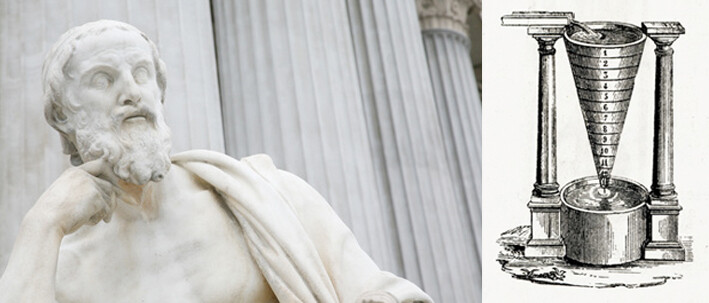
Water alarm clocks (since 300 BC)
It is in Egypt and in Babylon that this kind of time-measuring device was first used. Water-clocks leverage the relatively steady flow of liquid going through a vessel to measure and tell time. It wasn’t until 300 BC that a water-clock was fitted with some kind of alarm system, supposedly by philosopher Plato. Fifty years later, Hellenistic inventor Ctesibius created a more sophisticated version that was able to drop pebbles onto some sort of cymbal, or to blow trumpets, at the desired time.
Main advantage
It’s waterproof. Joking aside, this wake-up solution was probably an amazing breakthrough at the time.
Main inconvenience
Note that this marks the beginning of the “Annoying Wake-Up Sounds” era.
Candles (from 960 CE to the 20th century)
As they burn at a more or less consistent speed, candles were used to tell the time. The earliest versions of these candle-clocks were the graduated ones used in China. A European variation of the concept had metal balls or nails trapped in them: as the candle was slowly burning down, it would release them and they would fall into a metal can, making a sound that was supposed to get you out of bed at a preset time.
Main advantage
At that point in history, this was the most accurate solution, if we choose to only consider systems that allow the selection of the alarm time.
Main inconvenience
Yet another startling wake-up experience, and a fire hazard to boot.

Weight-driven clocks (around the 13th century)
It is in Italian cities that large mechanical clocks first appeared, built on top of towers. Taking advantage of the Earth’s gravitational field, this type of clock uses weights and cords to store energy and unleash it (when a weight falls down and pulls the cord, it drives the clock’s mechanism). Around the 15th century, some of these mechanical clocks were improved by the addition of a user-settable alarm: a pin placed in a hole would trigger an alarm at the time of your choice.
Main advantage
With the addition of a pendulum in the middle of the 17th century, weight-driven clocks reached an unprecedented level of accuracy (fewer than 10 seconds a day).
Main inconvenience
On early models, you had to wind the clock every 20 minutes, which is a time-suck, to say the least.
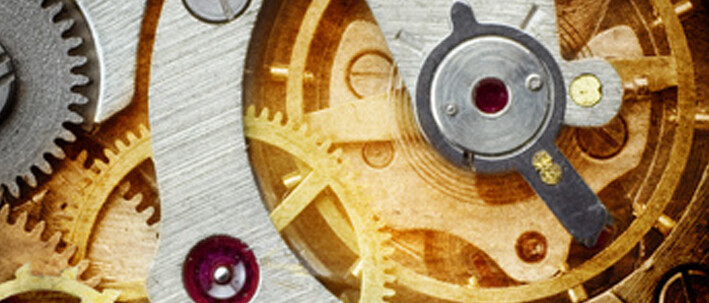
Spring-driven clocks (beginning of the 16th century)
Peter Henlein of Nuremberg, regarded as the inventor of the first watches, developed spring-powered clocks. Replacing the weights by springs, he was able to create portable clocks (#WearableTech). In 1876, more than 350 years later, Seth E. Thomas patented the first user-settable mechanical wind-up alarm clock.
Main advantage
It’s the first time you could bring a reliable time-telling machine with you (pocket sundials already existed, but they are not as accurate).
Main inconvenience
Not very accurate. It took around 500 years for spring-driven clocks to achieve isochronism (maintaining equal intervals of time).
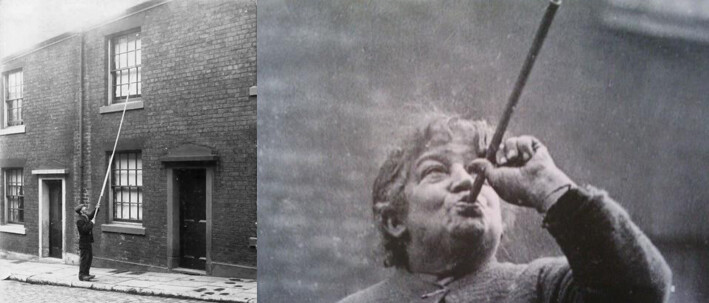
The knocker-uppers (from the 1760s to the 1920s)
In England and Ireland, at a time where alarm clocks and telephones were still uncommon, the knocker-uppers were in charge of waking up people. Equipped with either a long bamboo stick or a short baton, they would walk up to your house and knock on your bedroom window until you showed up. In exchange, they were paid a few pence each week. Mary Smith was one of them, and she roused people from sleep by shooting dried peas at their bedroom windows using a rubber tube.
Main advantage
The first individual wake-up calls!
Main inconvenience
Knocks like that are stressful. And there’s no way to get woken up at the best time, from a sleep cycle point of view.

Factory whistles (around the 1850s)
During the Industrial Revolution, workers often lived in the vicinity of the factory at which they worked — hence the idea to equip them with whistles that would wake everybody up.
Main advantage
No cost to you, and no need to worry about maintenance.
Main inconvenience
Doesn’t let you pick the time. And it’s another unpleasant sound to wake up to.
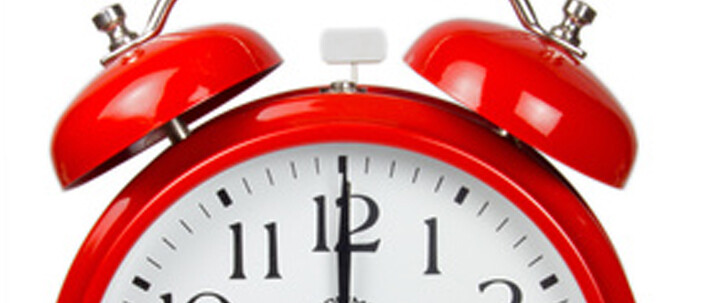
Alarm clocks (since the 1940s)
Invented by James F. Reynolds, when the USA resumed the production of clocks. Indeed, during the Second World War, American factories had to support the nation’s war effort and therefore focus on manufacturing more strategic items.
Main advantage
You can set the wake-up time and choose to be woken up either by a radio alarm function or by a typical beep/buzz alarm.
Main inconvenience
The ring of a double-bell alarm clock could have been the worst sound to wake up to, ever. Not really much of an advance over roosters.
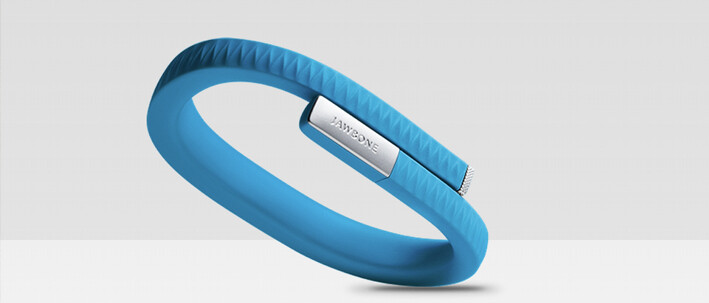
Jawbone UP (November 2011)
The Jawbone UP wristband activity tracker launched by Jawbone featured one of the first silent alarms: it can wake up its wearer simply by vibrating, without any unpleasant beeps. Tracking wrist movements, the armband is also able to roughly sketch out your sleep patterns. Thanks to these 2 features, this is the first device that enabled its users to get woken up during a light sleep phase.
Main advantage
Marks the end of the “Annoying Wake-Up Sounds” era.
Main inconvenience
Even though this vibrating alarm system is silent, it looks like a hospital bracelet crafted by aliens… not like that’s a bad thing, you know. If you’re dating an alien, it’s awesome.
In 2018, Withings released a Swiss-made activity- and sleep-tracking watch with a silent alarm in 2014, and now all of our watches (Steel and Steel HR) feature this. Compare our activity trackers.
Withings Aura (August 2014)
Enrich your sleep experience with the Aura – a bedroom system that combines the body data gathered by the contact-free Sleep Sensor (placed under the mattress) with the environmental data recorded by the Bedside Device to provide the most advanced sleep tracking.
The system comes with a Smart Wakeup function to ensure that you emerge revivified from a light sleep cycle. Aura also spares you the stress of being scared awake by an alarm clock: it gradually invites you to open your eyes with a 30-minute-long scientifically validated Light & Sound wake-up program that follows the smoothest path out of sleep.
Main advantage
For the first time ever, you can make sure you wake up smoothly (sunrise program), feeling energized because Aura wakes you up at the best time of your sleep cycle.
Main inconvenience
You need electricity, so people who go camping, well, they have the sun… or bears.

Update 2018: Withings Sleep
In 2018, Withings created an advanced sleep sensor and home automation pad.
Sleep doesn’t wake you, but it is designed to improve your nights and your days with free in-app programs and a Sleep Score to help you know what you need more and less of.
Want to learn more about sleep in general? Check out the freshest article in our sleep section.

